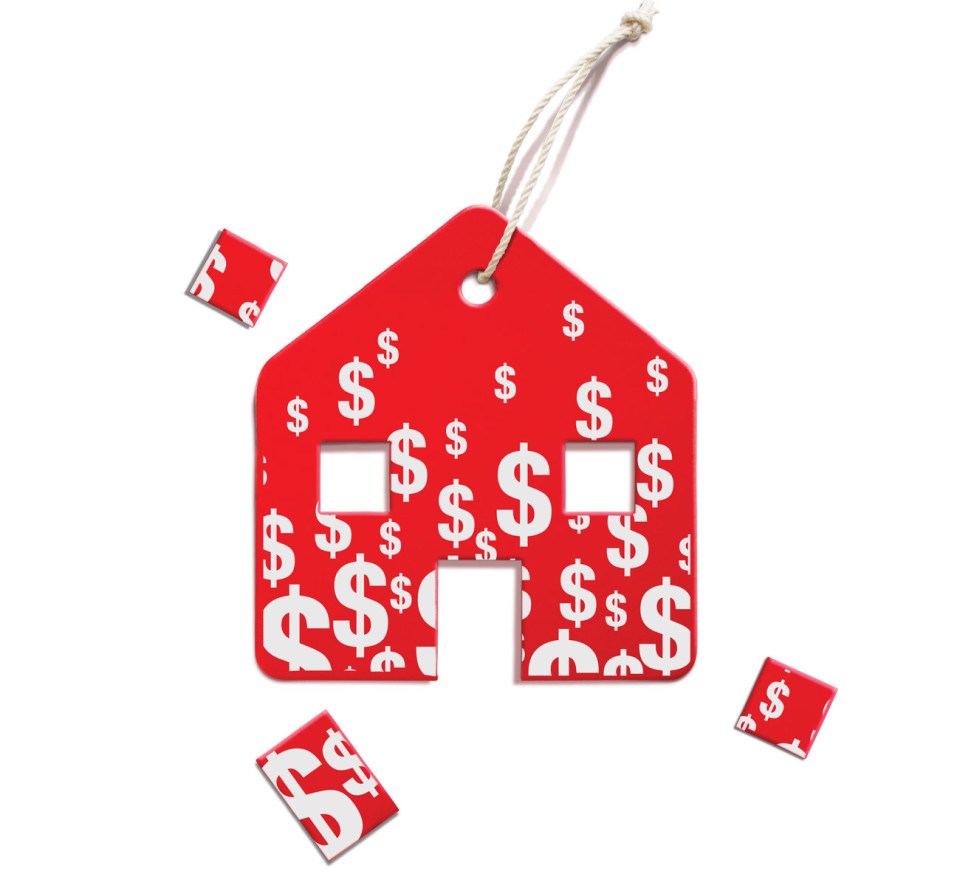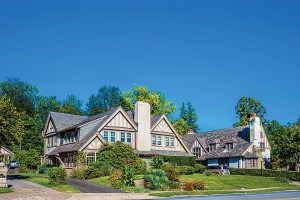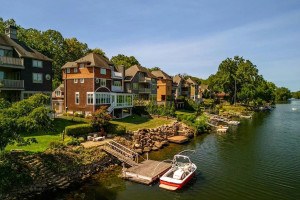Philly Housing Prices Are Through the Roof. But There Are Ways to Fix It
For decades, housing in Philadelphia has been relatively inexpensive. Now? Not so much. Here's how the region can buck skyrocketing costs and return to affordability.

Browse the listings on your preferred real estate website these days and here’s what you might find: A three-bedroom in East Passyunk that sold for $280,000 a little more than a decade ago is now $480,000. In Fishtown, the median sale price is well over $400,000. And elsewhere — say, Queen Village or Fairmount or University City — upwards of half a million bucks for a three- or four-bedroom house is increasingly the norm.
For most of this century, Philadelphia enjoyed a reputation as an unusually affordable major city — a place where young families could prosper and older residents could contemplate retirement, where artists could ply their trade and chefs and entrepreneurs could open up shop with some margin for error as they found their footing. The backbone of that promise of opportunity was a housing market that remained reasonable — accessible — even while costs in other big cities escalated into the stratosphere.
In those cities, even covering rent often required a second job or an unwelcome roommate. Buying a home was a privilege restricted to only the most comfortable. Here, on a relatively modest income, not only could you rent a place with enough money left over to cover the essentials (and then some), but houses were priced within reach for many — enough so that three-fifths of the population actually owned their own place. (Imagine: Just one generation ago, half of the homes sold in Philly cost less than $100,000.)
Such relative affordability didn’t just allow more of us to own homes but arguably even shaped our identity as Philadelphians. Here we were, a diverse, down-to-earth community of people who could largely sidestep the rat race required to make it in other major metros.
In the post-pandemic world, however, things have changed. Interest rates and construction costs have soared, while supply has sagged. And our incomes lag well behind those of our peers in other major East Coast cities. Rents in Philly, which once inched higher year by year, have leapt 26 percent since 2020, and home prices have risen even further, according to Kevin Gillen, senior research fellow at Drexel University’s Lindy Institute for Urban Innovation. These days, $100,000 will hardly buy you a teardown.
The numbers look even worse in the suburbs, where sale prices have increased by half in the past five years. A median home in Bucks County or Chester County now runs a cool half million dollars, according to listing service Bright MLS. The median sale price for the Philadelphia metro as a whole, which sat at $247,000 at the end of 2019, is now $380,000. Within city limits, the figure is a more modest $268,000, according to Bright, but that doesn’t offer much comfort to those struggling to make ends meet. More than half of Philadelphia renters and nearly one-third of homeowners now spend more than 30 percent of their income on housing — a level that has long been the federal government’s threshold for affordability.
True, these prices may look downright rosy to your average Bostonian ($850,000 median home price in the metro) or New Yorker ($839,000) or a homebuyer in D.C. ($675,000) — and even to those fortunate enough to operate in the upper reaches of the economic spectrum here in Philly. But for too many of us here, the shift has made life far more precarious. And that, notes Rick Sauer, the executive director of the Philadelphia Association of Community Development Corporations, has a real ripple effect.
“A home is such a foundation for success in life, whether it’s your kids doing well in school, maintaining stable employment, or passing on generational wealth,” he says. “If you don’t have that key component in your life cycle, a lot of other things will spiral down.” And then, he adds, “the city will end up spending a lot of resources to address the resulting impacts of people not being properly housed.”
But there is still some hope here, affordability advocates will tell you: Philadelphia can retain its reputation as a place where you don’t need to be wealthy to put down roots and live a good life. Reversing the recent real estate trends and fixing what ails us will require ingenuity, innovation, and investment — plus a measure of urgency not often found in the world of housing policy. A tall order, yes. But for both the city and its residents, the stakes couldn’t be higher, from more and much-needed habitable homes for people to the character and future of Philly itself.
If you’ve been paying any attention these last five years, you know that Philadelphia isn’t the only place where a housing crisis threatens destabilization. The national shortage of homes is estimated to be somewhere between 4 million and 7 million, a long-standing deficit whose impacts are only exacerbated by price shocks in the U.S. housing market. But our city’s circumstances are also affected by several Philly-specific characteristics that complicate the search for solutions. Chief among them? Philadelphians don’t have enough money. Our poverty rate hovers above 20 percent, and the median household income of roughly $60,000 is just three-quarters of the national figure.
“We don’t so much have an affordability problem as we have a low-income problem,” Gillen says.
But the issues are also specific to our housing stock. For one, the median Philadelphia home is almost 100 years old, according to the National Trust’s Preservation Green Lab. That’s nearly 30 years older than the national average. Older houses require more and costlier repairs to meet standards — repairs that can sometimes exceed a property’s value. That leaves many residents living in subpar conditions and drives up the price of high-quality homes, says Vincent Reina, an associate professor of city and regional planning at Penn’s Weitzman School of Design.
As an old city — relative to most of this country, at least — Philly is also thoroughly built out, leaving little land available for the type of large-scale, economical construction that can house dozens of families at affordable rates. Instead, says Emily Dowdall, president of policy solutions at Reinvestment Fund, a community development nonprofit, most new development comes in the form of pricier infill that necessarily costs more to build and to buy.

Philadelphia housing prices are rising out of control. / Photo-illustration by Carl Godfrey
Mayor Cherelle Parker campaigned on a promise to help address these issues by expanding existing home-repair programs and encouraging more private development; she aims to build or preserve some 30,000 houses during her first term. But even that seemingly robust target falls short of the goals in the city’s own 10-year housing plan, released in 2018. Today, experts say we need at least 60,000 affordable homes.
And that’s a challenge made even more difficult by yet another Philly-specific obstacle: the blight of councilmanic prerogative, which allows Philadelphia’s councilmembers final say on land use in their districts. This creates an unnavigable maze of red tape that varies by neighborhood. Despite the need for new housing, the city’s developers are flummoxed by this bureaucratic morass, which often slows projects down or stops them from ever taking off. And that’s a Philly thing, as one developer once described to Gillen. In New York, he said, the work of building homes is a long journey down a straight road. But in Philly, the road is crooked, and the turns come at you without warning.
But at least some of those twists and turns are correctable conditions, Gillen says. At the state level, for instance, Governor Josh Shapiro launched the PA Permit Fast Track Program to streamline infrastructure and development projects in hopes of growing the economy and drawing more investment to the state in short order. His initiative was broader than residential development, but still shows how Philly might address our own self-defeating red tape. “The city can’t do anything about the cost of Sheetrock or about interest rates,” Gillen says, “but it can streamline the building permitting and zoning process. That’s completely under Philadelphia’s control.”
It seems safe to say, however, that councilmanic prerogative isn’t going away anytime soon. And zoning changes are always a slog to push through. But Philly can still do plenty to boost housing supply now and rein in prices. Just ask Mo Rushdy, a developer focused on building homes for Philly’s working class.
As managing partner at developer Riverwards Group, Rushdy targets projects that can house those making close to Philly’s median income. (That’s roughly $60k per household.) In 2021, he unveiled Kensington Courts at Frankford and Lehigh avenues, a 155-unit project featuring townhomes, duplexes, and condos, priced at an average of $370,000. Even with a minimal down payment, Rushdy says, people making close to that median income could afford these homes, given the low interest rates of 2021, the city’s 10-year tax abatement for new construction, and the pre-pandemic construction costs.
Today, interest rates have doubled, the tax abatement has been effectively halved since 2022 thanks to a City Council vote, and construction costs have spiked. Building the same project now, Rushdy says, would require targeting residents with incomes closer to $100,000 … or doubling the project’s size to 300 units. Alternatively, he says, the city could update its policies to encourage more development of this sort in 2025.
Specifically? Rushdy, who is also head of the Building Industry Association, would like to see the city reinstate the full tax abatement with an affordability requirement, which would make it easier for projects to balance the needs of both developers and residents, he says. For his part, Gillen, an economist, suggests increasing the abatement to 20 years for low-income housing, which would make affordable development more viable for the people who create it. “Developers will build anywhere they can make a profit,” he says. Ensuring opportunity where profit is hardest to come by would be a boon.
Promoting density — encouraging the construction of transit-oriented developments that can stand taller than typical Philadelphia buildings, with less parking required from the developer — would also create more low- and middle-income housing, Rushdy says. Density, though, is a fraught topic in the housing community, raising knotty questions that can be hard to untangle about responsible, citizen-friendly development. Consider Dina Schlossberg, executive director of Regional Housing Legal Services, which represents organizations focused on affordable housing. One of her nonprofit’s clients is trying to build on land in West Philadelphia that’s been a community garden for the past decade, and meeting understandable resistance.
“We want to preserve community gardens,” she says, “but what do you do if somebody wants to build affordable housing out of that? What does it mean to have a healthy, vibrant community?”
It’s a tension Rushdy — and many affordability advocates — is willing to grapple with. Because if the powers that be don’t find ways to encourage development for the middle market, he says, Philadelphia will become a tale of two cities, a story defined by “the have-a-lots and the have-nots.” The type of geographical expansion that brought new housing to neighborhoods like Northern Liberties and Fishtown will recede, he says, and builders will look primarily to Center City for opportunity, as they did decades ago before the abatement helped spur development and build up more Philly neighborhoods for more people.
Of course, Gillen points out, development of just about any kind tends to meet some resistance, some pushback. “Philadelphians want growth,” he says. “They just don’t want any change.”
Here, though, some good news: Despite the obstacles — and the growing number of residents feeling priced out these days — there is still some momentum building in certain corners of the city’s housing and development portfolio. For one thing, there’s the Philly First Home program, run by the city’s own Philadelphia Housing Development Corporation. That program offers $10,000 grants to cover down payment and closing costs for first-time purchasers, and served more than 1,200 families in 2023. A companion program, Turn the Key, is also working toward its goal of turning 1,000 vacant city-owned lots into privately developed homes affordable to middle-income purchasers, offering these buyers good prices plus partially subsidized mortgages and down payment grants. Nearly 150 Turn the Key homes have been sold since the program was announced in 2022, roughly 300 are in construction, and many more will break ground this spring, according to PHDC president and CEO David Thomas. The average price of these homes is $280,000, but the average mortgage lands closer to $183,000 after grants and subsidies, leaving these homebuyers (who have an average income of around $45,000) paying roughly $1,350 a month.
Both of these projects are funded by the city’s $400 million Neighborhood Preservation Initiative, passed by City Council in 2020, which is aimed at restoring and building new housing stock. To date, the program has allocated only a quarter of its total budget — which means there’s $300 million left to invest in more homes. That’s important, because Parker hopes to put Turn the Key “on steroids,” Thomas says. This would multiply its benefits and reach thousands of Philadelphians. But this step, too, faces a serious hurdle, as it relies on improving the Land Bank, the city-run entity charged with managing and selling the city’s 40,000-odd vacant lots.
Thus far, admits Sauer, the Land Bank “has not lived up to the hopes and expectations we had.” (Sauer served on its board until February 2024; the organization he leads now — the Philadelphia Association of Community Development Corporations — was key in advocating for the bank’s creation.) To wit? It hasn’t had a new strategic plan approved since 2019, and both nonprofit and for-profit developers report struggles in acquiring sites for development. Assembling city sites that span multiple parcels — and could therefore support multifamily housing — is an even greater challenge, Sauer says. But with reform, the Land Bank has the potential to be a more effective tool in chipping away at our housing crisis. Streamlining the bank’s processes, making it more responsive to community needs, and accelerating its acquisition and disposition of sites for development could catalyze the type of change needed in Philadelphia’s housing market.
Sauer is also pushing for the city to launch what he calls a “quick-strike acquisition fund,” which would preapprove housing nonprofits for affordable development and give them an edge in obtaining properties that would otherwise go to for-profit developers.
There’s also hope to be found in other cities’ examples. Boston, Rushdy points out, recently launched a program aimed at converting the glut of underutilized post-pandemic office space into apartments, offering developers a 75 percent break on residential taxes for up to 29 years. (Center City, home to more than 42 million square feet of office space, currently faces a vacancy rate of roughly 20 percent.) “How forward-thinking are they?” Rushdy says. “Why can’t we do the same?”
And speaking of using what we have: Ultimately, making the city’s surplus of old homes habitable also needs to be a priority, offers Kenneth Bigos, executive director of Affordable Housing Centers of Pennsylvania, a nonprofit that provides free housing counseling to homeowners and would-be homeowners. This is especially true given the obstacles to new construction — including the uncertain future of interest rates, inflation, and construction costs under a new federal administration.
“The best solutions are not the ones that have ribbon-cutting events,” Bigos says. “They are the methodical home repairs for those who are struggling to age in place.”
To that end, there is the Neighborhood Preservation Initiative, as well as the PHDC, which poured $40 million into its Basic Systems Repair Program in 2023, fixing leaky roofs, dangerous electrical conditions, and faulty plumbing in more than 2,500 homes. And State Senator Nikil Saval’s landmark Whole-Home Repairs program — a bipartisan effort that received $125 million in 2022 to help 2,500 Pennsylvania families (including more than 400 in Philly) weatherize and repair their homes — made real progress, and was considered a resounding success. Alas, Harrisburg didn’t vote to maintain funding. The lesson? Even seemingly obvious, much-needed housing solutions don’t always stick when there’s large-scale investment involved.
But here, in a city that still has more homeowners than renters, investing in repair programs that can preserve Philadelphia’s aging housing stock is a real estate bet that would almost certainly pay off for years and years to come. After all, PHDC’s Thomas says, at the end of the day, a mortgage is inflation-proof. “The most affordable house,” he says, “is the house you already live in.”
Published as “The Great Philly Sticker Shock” in the March 2025 issue of Philadelphia magazine.


